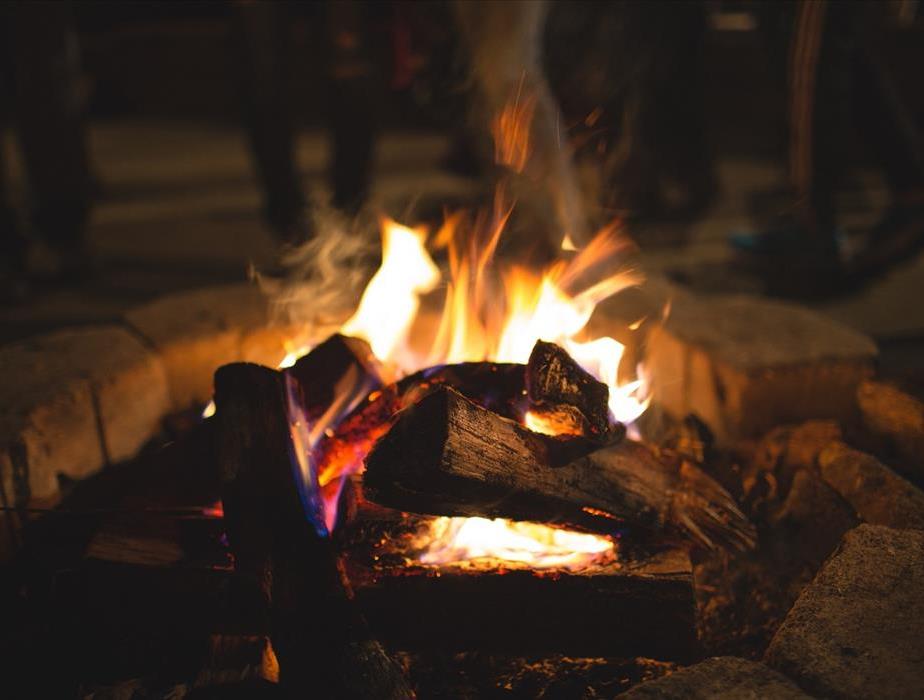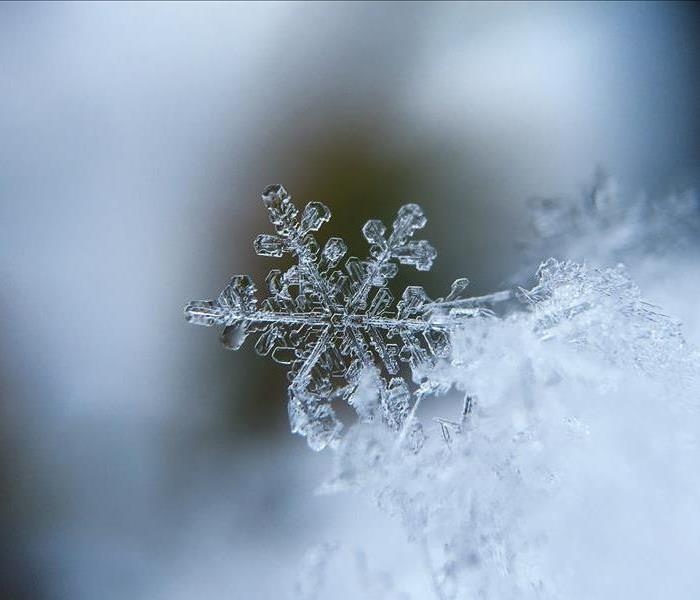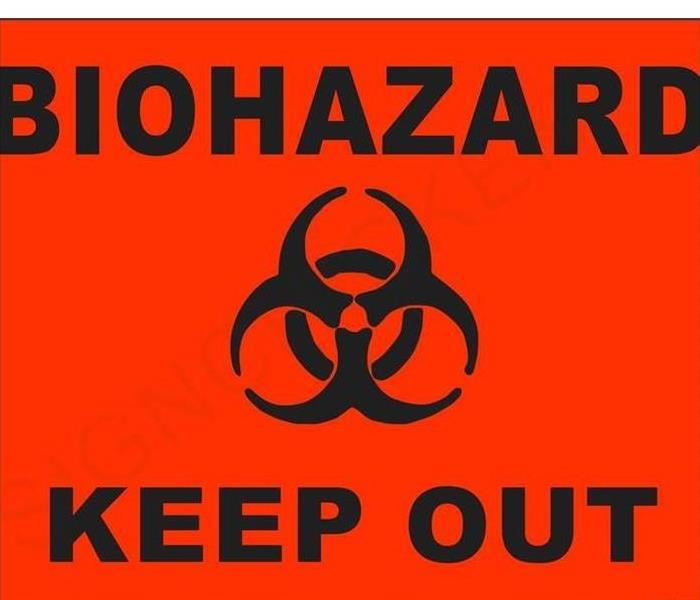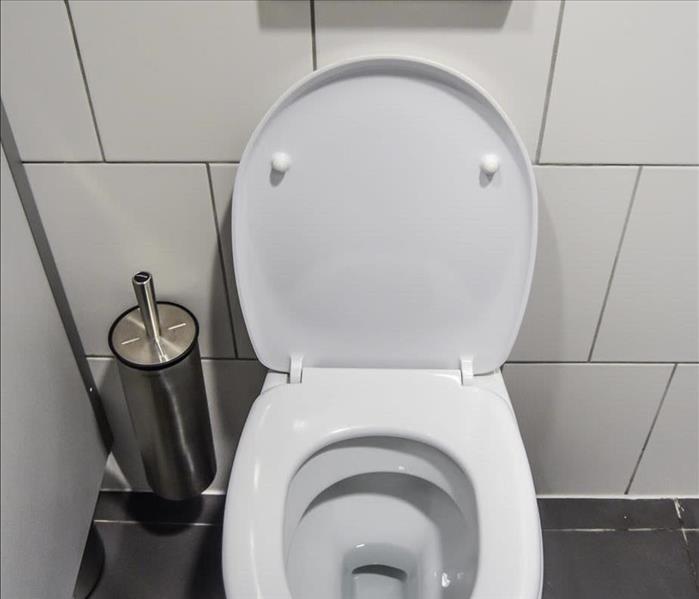Recent Posts
Backyard Bonfire Safety
2/21/2024 (Permalink)
With cooler nights here, (and fewer mosquitoes) we may want to plan an outdoor evening on the deck or in the back yard with family or guests, gathering around firepits and clay chimineas.
Bonfires especially can be a great activity for the whole family, but it’s important to keep in mind the dangers of open flames and how to have a bonfire responsibly!
- You should always either use a fire pit purchased from the store or dig your own – Fire pits are a crucial part of keeping a bonfire contained where you want it to be and not have it spread. Be sure to also clear away brush from around the fire pit as well.
- Make sure your fire is a safe distance from houses, trees, powerlines, or anything that can be affected by the heat.
- Keep a bucket of water or a garden hose close by – accidents happen and being able to address them immediately is how to prevent things from getting worse.
- Use newspaper and small kindling to get the fire started, NOT gasoline or other accelerants.
- Never spray aerosols or toss canisters into the fire – The heat can make these containers explode and throw burning embers everywhere.
- Limit your fire size – It’s tempting to make a big fire, but you should make sure to keep your fire to a manageable size, no bigger than a few feet around.
- When you’re done, be sure that the fire is completely extinguished – stir the ashes around and use more water than you think you need to ensure there is nothing still smoldering. Embers can stay smoldering, hidden under a bed of ashes for hours and can be relit by the wind unexpectedly.
Bonfires are a lot of fun and a great way to spend time outside, just be sure that you are taking the proper precautions to do so safely.
Storm Readiness 101
1/8/2024 (Permalink)
As leaders in the restoration industry, we know firsthand the amount of damage that a storm can do to your home. Addressing the damage as quickly as possible is key to preventing further damage from occurring. We wanted to share some of the most important areas of your home that can be affected by storm damage, so you know where to check afterward.
- Basement – Areas of your home that are underground are some of the spots that are the most prone to water damage following a storm. Check around the edges of your basement floor and walls for signs of moisture. Make sure that drain spouts are properly angled away from your home and that there are no areas where water can pool next to your house.
- Foundation – Similarly to basements, your home’s foundation is particularly threatened by water damage after storms. Water from the outside can seep into cracks in your foundation and weaken it over time. Double-check check there is no standing water or signs of moisture in your concrete, and make sure that your sump pump is functioning properly.
- Crawlspaces – Water can pool in areas underneath your home and cause significant damage to the structural components, like mold and rotting wood.
- Windows – Over time the seals on your windows can degrade and strong storms can crack windows and window frames, allowing water to get into your home.
- Roof – Probably the most prone to storm damage, wind can damage shingles and throw broken tree branches all over your home. As one of the main sources of protection from the outside elements. It is crucial to inspect your roof after a storm. Ensure there are no leaks and remove any debris that could further damage your home. Check for any signs of moisture in your attic as well as this could be a sign that there is a hole somewhere you might’ve missed.
- Gutters – Strong winds and falling branches can damage your gutters or even completely rip them off the side of your house. Your gutters are essential in preventing water from getting into your home and directing it away from your home’s foundation. Make sure that your gutters are in good condition and free from any debris that may clog them.
While storm damage may not always be 100% preventable, hopefully, these tips can help you prevent any further damage from happening, and if you do happen to find any signs of damage to your home after a storm. Our technicians are here to help. We’re available 24/7, 365 days a year, so don’t wait, give us a call and let us know what we can do for you.
Temperatures are dropping, is your home ready?
1/5/2024 (Permalink)
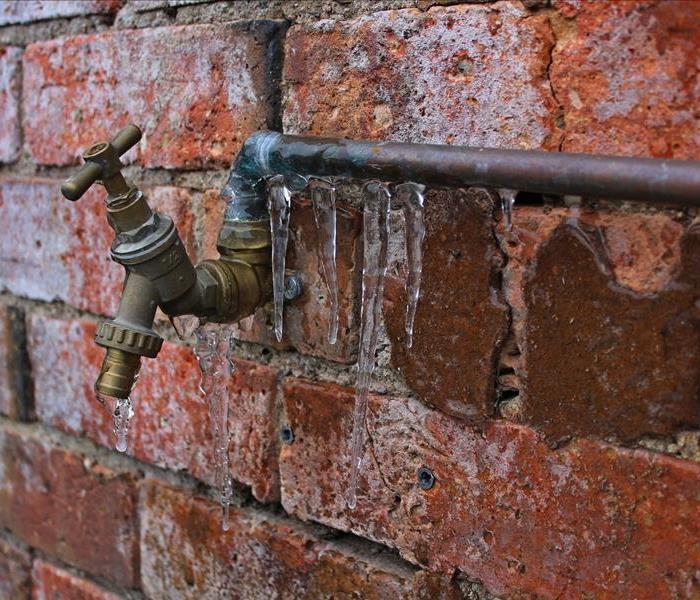
With winter fast approaching and colder weather on the way, is your home ready to keep you and your family dry? Check out these best practices to help prevent winter water damage to your home! • Prevent frozen pipes and pipe bursts o Any faucets connected to pipes in unheated areas (attic, crawl space, outside) are more likely to freeze when the temperature drops. Be sure to let cold water drip from those faucets to help prevent freezing. o If you plan on leaving your home for multiple days during freezing temps leave your heat on. Heating costs may rise a bit, but comparatively, to a burst pipe in your home, you’ll be happy you did. • Prevent ice dams o When warm air from your home heats the roof and melts the snow on the roof it collects in unheated areas and refreezes, making ice dams that limit drainage off the roof and can cause damage to your home. o Make sure to clear your gutters and downspouts so that water can drain off the roof and doesn’t collect anywhere to refreeze o Install gutter screens to help keep out debris build-up in gutters o If you live in an area with especially large amounts of snowfall, consider installing snow guards to prevent snow accumulation on your roof and lining under your shingles to prevent leaks as snow melts • Ensure you know where and how to shut off your water in case of an emergency o When pipes freeze or burst it is important to be able to respond immediately and prevent the issue from getting any worse. Make sure that you know where your water shut-off is and turn it off the second you discover a leak While the cold weather can bring potential damage to your home, taking the proper steps to get ready can help you enjoy the winter wonderland stress-free, and if disaster does happen rest assured that us here at your local SERVPRO are ready to help you make it “Like it never even happened.”
Duct Cleaning
9/14/2023 (Permalink)
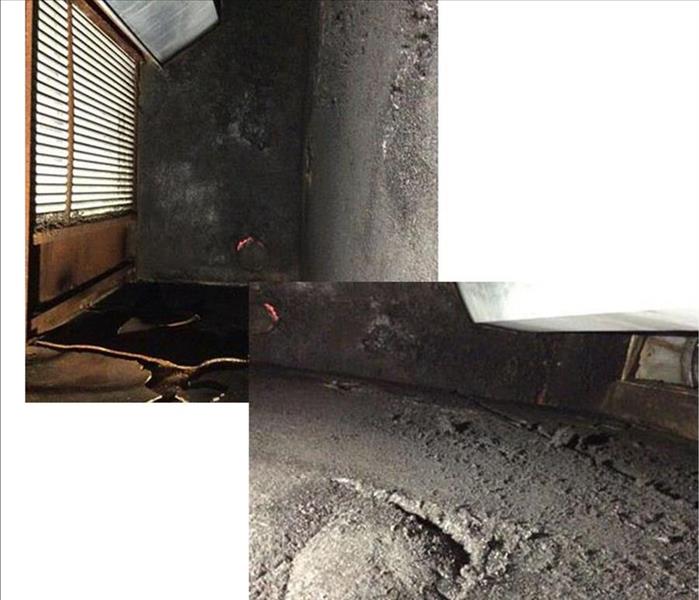 When was the last time you had your ductwork cleaned?
When was the last time you had your ductwork cleaned?
While most people know the SERVPRO brand for water and fire damage restoration, we also provide other crucial services to homes and businesses. One such service is duct cleaning.
Air ducts perform the essential functions of moving the air around your building, providing hot or cold air depending on the season, and helping to maintain proper air quality and circulation. Like everything else in your home or business, it requires regular maintenance and cleaning to perform at its best. Over time, ducts can be filled with dust and dirt particles, or even mold spores and other harmful contaminants. While your HVAC’s air filters are meant to help remove these things from the air, they don’t always get all of it, and a build-up can occur in the ducts. This buildup can limit airflow and ultimately affect your HVAC system’s efficiency. Not only will this increase your energy costs, but it can also make it harder to maintain a comfortable environment for your staff and customers. Not only are you losing efficiency and air quality by neglecting your air ducts, but if left long enough this dust buildup can become a huge fire hazard.
Air duct cleaning should be done roughly every three to five years, or more depending on the building and what it’s used for. If your business needs a duct cleaning give us a call or fill out our form online and let us know how we can help!
What to do before we arrive!
9/13/2023 (Permalink)
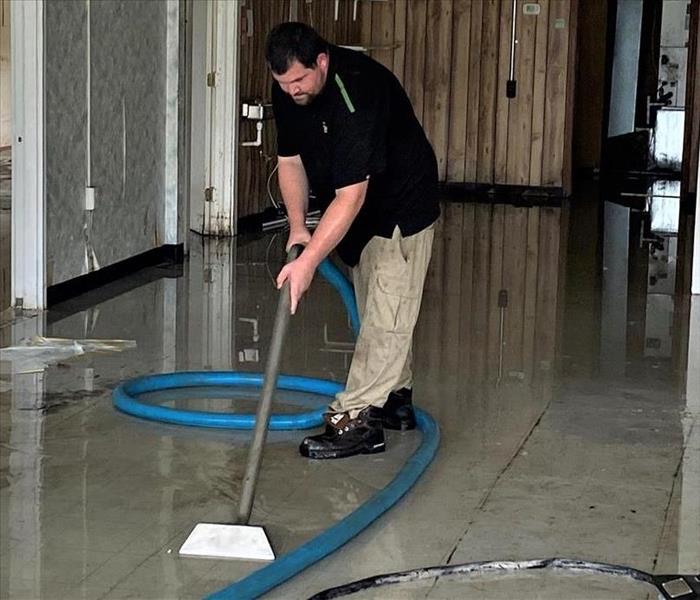 Do you know where your water shuts off are located?
Do you know where your water shuts off are located?
No matter the size, water damage has the potential to cause some pretty big issues structurally to your home or business. You must work quickly to make sure that the damage does not continue to worsen because as long as the moisture is present damage can continue to occur. While we will always recommend using a professional water damage restoration company to help ensure that your property is thoroughly dry and there’s no lingering moisture hidden in the structural materials there are a few things that you can do to help mitigate any more damage from occurring before we arrive on scene:
- Shut off the source – If the source is a leaky pipe or appliance, you’ll need to shut off the water supply to that leak, If you don’t know how to shut the water off in your home you should learn as soon as possible as you never know when you may need to.
- Electricity – If accessible without going through the water, shut off the electricity to the affected area as soon as possible. Water conducts electricity very well and this poses a serious safety risk. Not only that but an electrical hazard is also a big fire hazard and the last thing you need is another form of damage to be added on top of the water damage. If you can’t shut off the electricity from the breaker safely you may need to leave and shut it off from the outside so that you’ll be able to move about the area without worrying about getting shocked.
- Additionally, you should never try and turn on any lights if the ceiling is wet.
- Excess water – Use mops, towels, etc. to soak up as much water as possible. Water damage increases by the minute. The more water you can soak up while waiting for us to arrive the less damage is likely to occur and it will allow us to start drying out your property faster.
How Smoke Odors Affect Your Home
9/11/2023 (Permalink)
 Now that the fire is out, how do you get rid of the order?
Now that the fire is out, how do you get rid of the order?
If you’ve ever sat around a campfire, you know that the smoke odor clings to everything. Your clothes, belongings, and even your hair, can smell like campfire smoke for days afterward. The same is true in the unfortunate event that your home or business experiences a fire. These particles coat your walls and belongings and everything else the smoke touches leaving a residue and foul odor behind that’s difficult to get rid of. In order to understand these odors and how to fix them, it’s important to first understand what smoke really is and how it’s created during a fire.
All of the items in your home are made up of various compounds, some are flammable, and some are not. For example, in a piece of wood, you’ll find water, cellulose, carbon, and other minerals, and volatile organic compounds or hydrocarbons (a compound is “volatile” if it evaporates when heated). Smoke happens when there is incomplete combustion of a fuel source. When there is complete combustion, everything is burned and these hydrocarbons are converted into water and carbon dioxide, but in incomplete combustion, not all of the particles are burned. Visible smoke is a collection of these unburned particles in various forms. Ash is also another by-product of fires and consists of non-flammable minerals that do not burn.
When these hydrocarbons in the items in your home are evaporating and turning into a gas (smoke) these microscopic particles are spread all over the house through the air. This smoke can also carry tiny solid (carbon/soot) and liquid particles from the burning materials as well. As it travels through your home these particles are left behind on your belongings and everything else the smoke comes in contact with. Some of these compounds left behind include the nasty odor-causing particles that we perceive as smells.
Depending on the fuel sources (wood, protein, plastic, etc.) the compounds that make up these smoke particles will be different and will change what’s left behind, how it needs to be cleaned up, and how it smells. For example, wood fires often create a powdery dry smoke that’s easier to clean up visually, but the particles are small and can easily settle into porous materials making the smells linger even after the house “looks” clean. Plastic fires often create a “wet” smoke that carries extremely sticky particles that are very difficult to clean.
Getting rid of smoke odors can often be a whole separate task on its own from cleaning up the smoke damage like soot and stains, which often requires special cleaners or equipment like ozone or hydroxyl generators. This equipment releases radicals in the air that can bond to the odor particles causing them to fall from the air due to the added weight where they can be cleaned easier or help decompose them and neutralize the smells.
As you can see, there’s a lot more going on in smoke and the odors it creates than meets the eye. Here at SERVPRO, our technicians are constantly trained to use the latest techniques and equipment in fire and smoke damage restoration to help ensure that we can get your home or business back in order in the most efficient and effective way possible. Remember that the longer the longer these smoke particles sit on your belongings the harder it will be to fully get rid of them and the more damage they can cause! We’re available for emergency services 24/, 365 days a year so please give us a call and let us know what we can do for you.
Water in Your Crawl Space
9/6/2023 (Permalink)
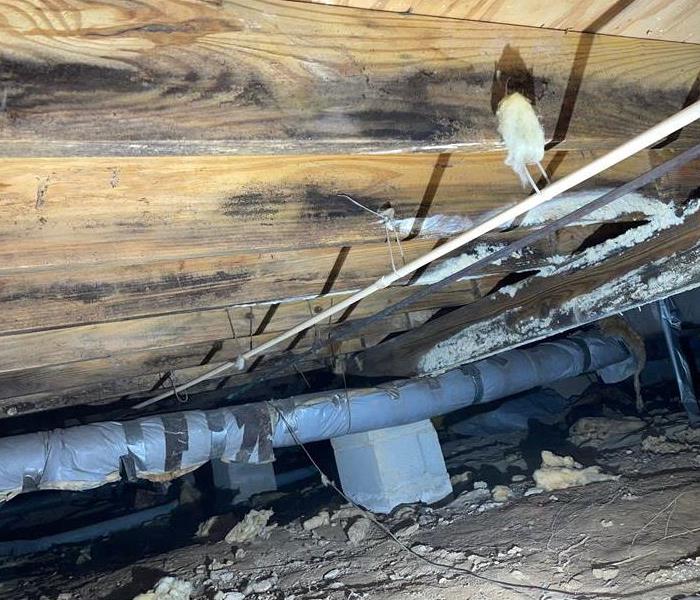 Does Your Crawl Space Look Like This?
Does Your Crawl Space Look Like This?
Crawl spaces are a common feature in many homes. Unfortunately, it’s also a common place to find water where it’s not supposed to be. If you find water in your crawlspace it’s important to deal with the issue quickly. If left alone it can lead to mold, musty odors, and rotting.
Water in your crawlspace can come from a number of different sources including plumbing leaks, heavy rainfall, faulty sump pumps, foundation damage, and others. In order to properly address the water in your crawlspace you first have to identify where it’s coming from. If the source isn’t addressed before remediation, then the problem could just reoccur. To help prevent future standing water you can install drainage or a sump pump in the crawl space to help keep it dry after you’ve fixed the issues in case of future problems.
Once you’ve figured out and taken care of what is causing the water to get into your crawlspace you can begin to fix the damage that has been caused. First, the standing water needs to be removed, and a dehumidifier is put in place to help reduce the moisture levels and prevent mold growth. Once the standing water is removed and everything is dried out, all of the affected areas should be inspected for water damage and mold growth to make sure they don’t need to be repaired, cleaned, or replaced. Depending on how long the water was in the affected area it could have started to rot wooden structures beneath your home that might need to be taken care of.
While these fixes can potentially be done yourself, water damage, especially in areas of your home where structural components are involved, it’s best to contact a professional to make sure that everything is done correctly, and that everything is dried out properly. Otherwise, more damage may occur, or the problems may come back again. SERVPRO is a leader in the restoration industry and our team is always training to help ensure that the water damage in your home is taken care of properly according to industry standards. Give us a call and let us make your crawlspace water damage “Like it never even happened.”
Prep Your Building for Winter Weather
9/13/2022 (Permalink)
Cold weather can be a stressful time for many property management companies. It’s hard to predict how the ice and snow will affect your properties and if not kept up with can cause a lot of damage to them.
In the unfortunate event that something does happen to one of your properties, it’s important to be able to respond and have the problem addressed as quickly as possible. Your clients or tenants will expect you to have a response plan in action as soon as you are notified of the problems.
SERVPRO of Chesterfield and SERVPRO of Tri-Cities, Plus is ready for any challenge you can throw our way. We respond faster to every disaster. Our highly trained team of technicians can handle jobs of any size, whether it’s a residential rental or a large office building they are ready to do their best to help ensure that your clients are satisfied with how you handled the problem
SERVPRO Cleans Biohazard Materials
8/24/2022 (Permalink)
Here at SERVPRO of Chesterfield and SERVPRO of Tri-Cities, Plus we’re primarily known as a restoration company, handling fire, water, and mold disasters for your family and businesses. While this is true, we are also equipped to handle many other scenarios that require cleanup and repairs to your property. This includes anything related to biohazards and crime scenes:
Pathogens including COVID-19
SERVPRO offers a vial pathogen cleaning service through our Certified: SERVPRO Cleaned program. With commercial cleaning equipment like foggers and proprietary cleaners, we’re able to give your property a specialized deep cleaning that goes beyond the scope of typical janitorial services.
Blood-borne Pathogens
Our team is trained to remove potentially hazardous substances resulting from accidents, crime scenes or death that includes bodily fluids.
Methamphetamine Labs
Many of the chemicals used in the production of illegal drugs are highly volatile and are capable of leaving harmful residues throughout a structure. Our technicians follow federal and state guidelines to properly clean all surfaces.
Tear Gas and Pepper Spray
The chemicals found in tear gas and pepper spray are toxic and corrosive. Our technicians are able to remove these toxins and irritants from the surfaces of your property and return the rooms to a safe and habitable space
Fire Extinguisher Residue
Using chemical or powder fire extinguishers leaves behind difficult to clean residues on the surfaces of your property. SERVPRO professionals can remove these residues from your home and help you decide which items are salvageable or should be discarded.
Fingerprint Powder
The powders left behind in evidence collection can be difficult to clean and easy to smear and make worse. Using our dry soil removal techniques and extraction devices we’re able to remove them while preventing their transfer to other surfaces.
Biohazard situations can often be traumatic, and our team is equipped to handle them with the respect and professionalism needed. In addition, we are also able to work directly with your insurance company to help streamline the processes and make things go as smoothly as possible. When you need to know that your property is clean and safe, SERVPRO of Chesterfield and SERVPRO of Tri-Cities, Plus is here to help.
Common Toilet Leaks
8/15/2022 (Permalink)
Finding out there’s a water leak in your home is never fun, but one of the last places you want to be leaking is your toilet. As with everything else in your home, toilets can degrade over time with regular use. It’s important to know the most common causes of why your toilet could be leaking and how to fix them.
- Bad Supply Line or Valve – If the issue is with your supply line you may see dripping when you flush. The problem is that small leaks are often very difficult to find and identify. The easiest way to find them is with a colored water test. Using color-test safe tablets or food coloring to avoid staining the toilet, dye the water in the tank and wait. After about 10-15 minutes check and see if you can find any colored water outside the toilet. If not, give it a flush and then check again. If you still don’t see any colored water, then your problem may be elsewhere.
- Broken Tank Flange – The tank flange is what mounts the toilet to the floor and connects it to the drain line. If this is broken, there are a few things you may notice. First is obviously, moisture buildup or puddles around the base of the toilet. Additionally, you may notice unpleasant odors, or your toilet might be wobbly. Both of these are signs that the flange my need to be replaced.
- Wax Seal – When you flush the toilet, the water will exit into the sewage line. If the wax seal below the toilet is damaged, the water may instead go around the base of the toilet. To repair this, you should first try and tighten the bolts on the toilet, if you’re still having issues, you may need to replace the wax gasket.
- Poor Installations – There is also the possibility that the toilet was originally installed incorrectly. If this is the case, there’s a chance that the water damage could have been happening for quite some time before you noticed. If this is the case, you should replace the toilet and contact a water damage company as soon as possible.
Remember that water will continue to damage your home until the source of the leak has been addressed and everything has been dried out. Putting off addressing the water damage in your home can lead to even more costly repairs. If you’ve discovered water damage in your home due to a leaking toilet or any other cause our team here at SERVPRO of Chesterfield and SERVPRO of Tri-Cities, Plus is available 24/7, 365 days a year to help make it “Like it never even happened.”






 24/7 Emergency Service
24/7 Emergency Service
